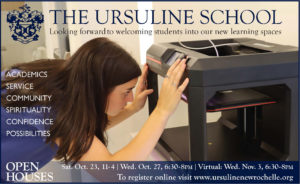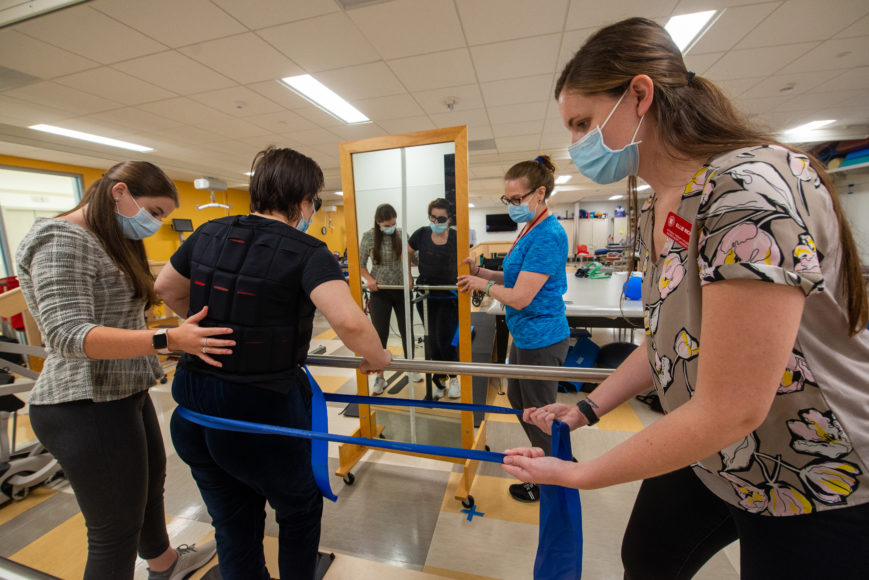United States Air Force Capt. Andrew Smietana recently received the Senior Company Grade Officer of the Year Award for the 60th Medical Group at David Grant Medical Center, Travis Air Force Base in Fairfield, California. But Smietana’s journey to that point in his life began in another Fairfield – the Connecticut town where he received a doctor of physical therapy degree from Sacred Heart University.
“Learning physical therapy is not easy,” Smietana says. “Sacred Heart University’s program was challenging, but the professors definitely set us up to succeed when we entered the real world.”
Smietana is among a skein of Sacred Heart graduates to pursue a physical therapy career in the U.S. armed forces. That’s fitting, says Beverly Fein, associate professor and director of clinical education at the university, because the profession can trace its beginnings to the military.
“The roots of our profession come from reconstruction aides in World War I,” she says. “There’s a good-sized cohort of physical therapists in each of the branches of the U.S. military. We’ve always had students who are interested in knowing more about the military, and the quality of physical therapy practice in the military tends to be very high.”
Fein adds that several alumni from the university’s program who pursued Air Force careers have kept in touch with her department and have addressed classes via Skype and Zoom on the career opportunities in that branch of the armed forces. Sacred Heart-educated physical therapists can also be found in the Army, Navy and Coast Guard.
Sacred Heart introduced its physical therapy program in 1996 and graduated its first class in 1999. The program averages 68 students per year who are required to graduate with a doctorate in physical therapy in order to pursue this line of work.
“The curriculum is a three-year doctoral program that includes 38 weeks of full-time clinical experiences that occur at clinical facilities all over the country, which is how we work with the Air Force,” Fein says.
Physical therapy has “been a very popular profession for a very long time,” she adds while acknowledging that many students who seek a place in Sacred Heart’s program never make the cut.

“Unfortunately, there’s only so many seats, which is one of our biggest limitations,” Fein says. “Students who would like to become physical therapists tend to need fairly high academic standing.”
For the past year and a half, the physical therapy profession in general and Sacred Heart’s program in particular have aced an unprecedented existential threat.
“Covid has been one of the biggest problems for all of us,” she says. “Patients chose not to go for physical therapy. It was not a priority in the pandemic. There were people in the outpatient environment who were furloughed, and there were folks in the skilled nursing facility and short-term rehab who found themselves in some of the worst of the pandemic with many residents passing away from Covid, as we saw in the nursing homes.”
During the pandemic, Fein’s department hosted several virtual panel discussions with some of its alumni who were practicing in different settings, and these individuals shared how Covid affected their work.
“Those who were already in the hospital acute care setting were particularly impacted,” she recalls. “Many people who were in hospital-based settings but were in the outpatient environment were pulled into the acute care to help out in the hospital, because the hospital outpatients initially really dropped off. As you would expect, elective surgeries disappeared.”
Fein warns that patients recovering from Covid will be among those most in need of high-quality physical therapy.
“Many of these folks who are going into the ICU and becoming intubated on ventilators and staying on ventilators for long periods of time develop what we call post-intensive care syndrome (PICS), where they need extensive rehab,” she says. “They have neurological issues, muscular-skeletal issues and tremendous loss of endurance and a range of things. And Covid exacerbated that, because they were on ventilators for such long periods of time, which is not typical. So physical therapy has been very, very involved, although you don’t hear about us as much as you hear about the doctors and the nurses and the respiratory therapists.”
As for educating the next generation of physical therapists, Fein says that the university was not able to send students out for clinical training during the pandemic’s worst stretch, which resulted in delayed graduations for some students. She also acknowledges that the road ahead for these students is still unpredictable.
“Even now, there are facilities that are not yet ready to open up to take students or are taking fewer students because of physical space and needing to physically distance, or because of emotional burnout that their staff is still experiencing,” she says. “And, of course, looking around the country, we see the Delta variant surge happening so much in other parts of the country. That hasn’t shown up here yet, but I’m concerned.”
For more, visit sacredheart.edu.







